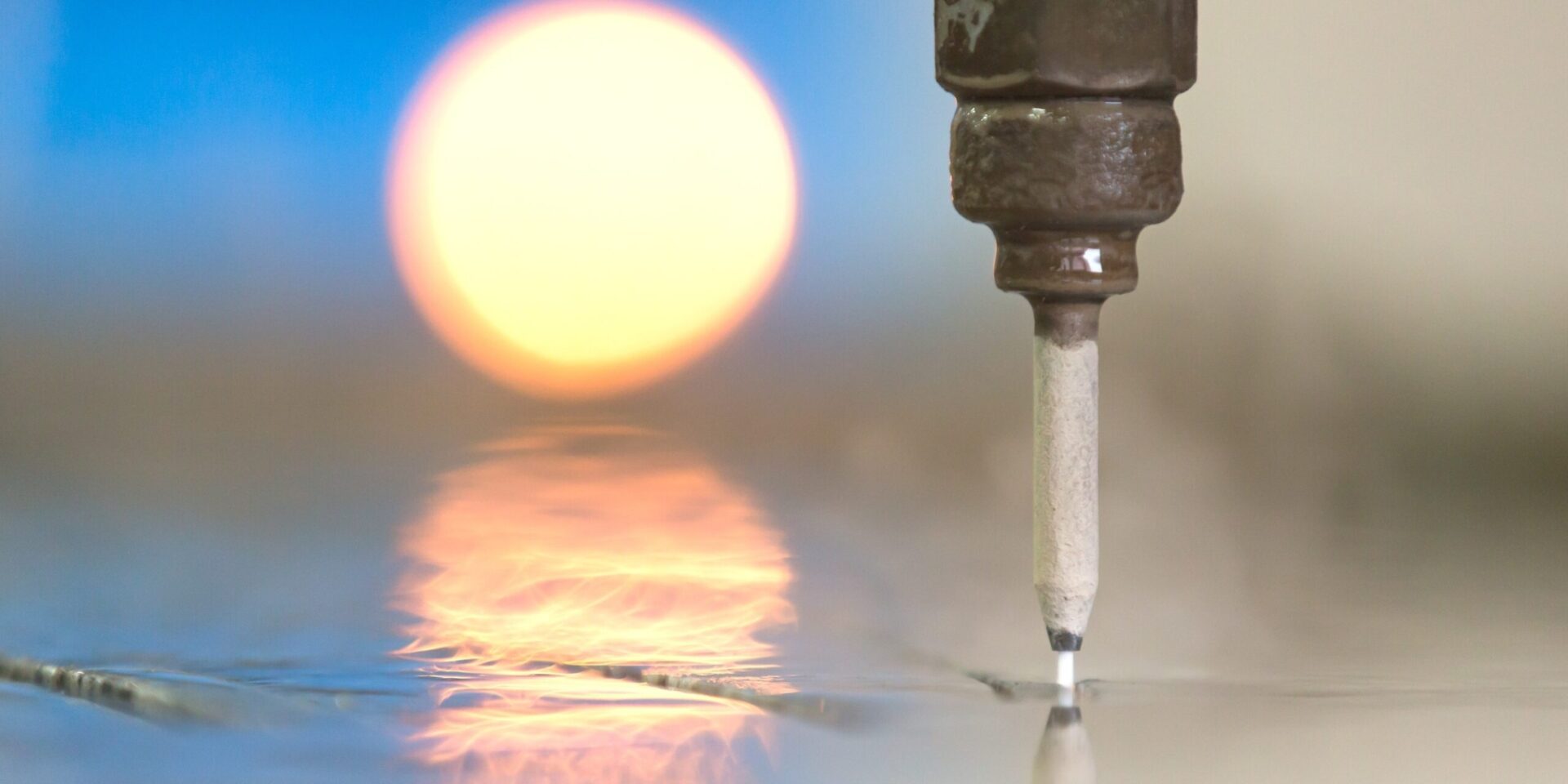A waterjet cutter is a specialised device or machine tool that uses high pressure water, sometimes in combination with an abrasive substance, to cut through a variety of materials accurately and quickly. In the following article we explore exactly the kind of materials that may be processed with waterjet cutting.
Why choose waterjet cutting?
The waterjet method has been around for many years, but is something of a ‘Cinderella’ process. The popular belief is that it is confined to industries, such as architecture and construction, where it is used to cut stone or large wood laminates. But today’s sophisticated machines are equally aimed at the engineering and manufacturing industry. These machines offer advanced features such as profiling a variety of materials in two dimensions (2D), but also performing shaping and forming of complicated parts from thicker materials in three dimensions (3D) – through 5-axis CNC movements – all on the same machine. Combining these two functions on one machine results in more flexibility for design and production engineers. On the other hand, eliminating transfer time means lower costs and faster processing.
Additionally, the waterjet method opens up new opportunities for material and process innovation, and higher productivity. With this process in mind, designers may look at new ways to make something and it may help production engineers switch to a more economical way of manufacturing a part. Components that have hitherto been produced using costly processes – such as milling, grinding or hot-metal casting – may now be made using a potentially lower cost method.
What’s more, with 3D waterjet forming or cutting there is little or none of the risks that may occur with techniques such as milling and grinding, namely the creation of micro-cracks during processing, leading through stress in use to the propagation of the crack and later fracture of the part. Similarly, waterjet cutting generates no heat, which means there is no localised stress build-up that may occur when castings cool.
What kind of materials can you cut with a waterjet machine?
The specialised nature of the waterjet machine allows it to cut through a variety of materials and the very small diameter of the cutting stream enables it to do this with complete precision and less waste of material. Thanks to no heat being generated in the process, it means that with 2D waterjet cutting there is no material edge hardening, no molecular or structural changes, and with 3D waterjet cutting, little risk of crack formation or heat distortion that may occur with other cutting or shaping processes.
There is an almost limitless range of materials that may be used with the machine, including:
- Metal and metal plates (including Corten)
- Ceramics
- Stone
- Concrete
- Composites
- Wood
- Plastics
- Paper
- Castings
The waterjet machine can be used on materials of up to 200mm. The only material that is not suitable for this method is toughened glass, as it shatters instantly due to its weakness.
To find out more about waterjet cutting and figure out whether this is the right profile cutting method for your needs, download our free engineer’s guide to waterjet cutting here.

